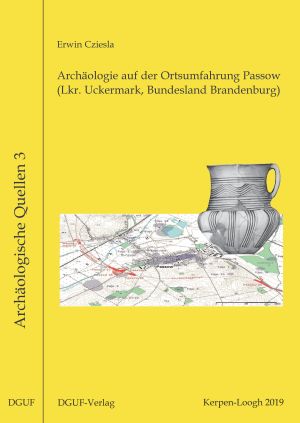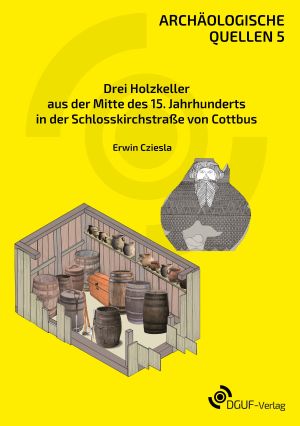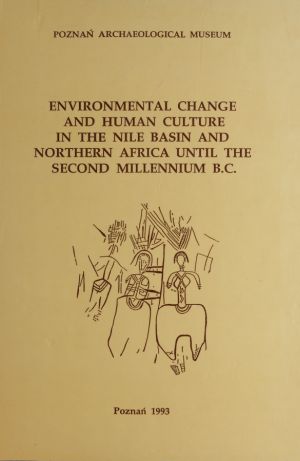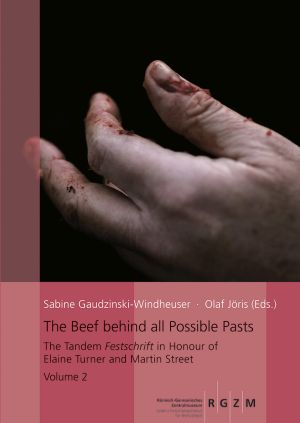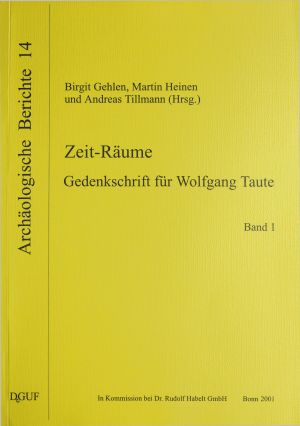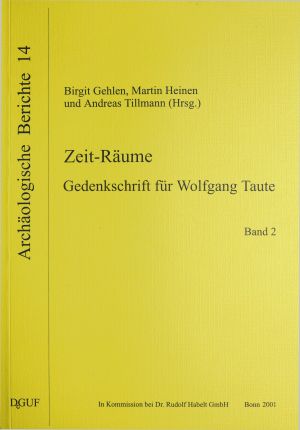Cziesla, Erwin
Dauerthal, Wallmow, Klockow, Dreesch, Rosow und Bietikow – verursacherfinanzierte Grabungen mit bandkeramischen Funden und Befunden aus der Uckermark, Brandenburg
By removal more than 1.5 million m2 topsoil in the Uckermark, six sites with Bandceramic features were documented. Two pit-houses provided covered a work-area, functionally used for slaughtering, milk processing and food preparation in cooking ovens. The site Dauerthal yielded 100% domesticated animals, which were slaughtered on the site, with skin processing into leather. The absence of certain body parts (skulls without lower jaws / bones associated with best cuts of meat) is interpreted, even religious motivated actions being discussed. Unexpected is the lack of longhouses, which in other regions are the most characteristic feature of this culture. Ceramic-decorations show parallels to neighboring regions, and an exchange of lithic objects (trapezes, truncated blades) with the indigenes population.
Archäologie auf der Ortsumfahrung Passow (Lkr. Uckermark, Bundesland Brandenburg)
In order to quicken the travel times between Schwedt/Oder and Prenzlau (northeastern Germany), as well as relieving the congestion in the little community of Passow, a ring road was planned. Since the project is situated in an extremely favorable topographical settlement area, all ground operations were placed under cultural heritage orders. Between November 2003 and December 2005, an approximately 5.2 km long route was prospected, and according to these results, an area of 70.000 sqm with 1350 archaeological features in six spatially separated areas (named Passow 6, 20, 26, 25, 27 and Wendemark 10) on both sides of the river Welse were documented.
The oldest finds are Late Mesolithic scattered finds embedded in Bronze Age features. Followed by Neolithic ceramic concentrations and some single burials and pot-depositions. But most of the features of the area Passow 27 & 6 are datable to the horizon from Late Bronze Age into the Early Iron Age, in which two spatial separate areas are clearly separated from each other. On the one hand, there are pit features which contained copious ceramic sherds and special finds, such as remains of mud-turtles, an isolated human skull without mandible or the complete skeleton of a young female, whose shinbone was discovered in a neighboring pit. On the other hand, there is a type of feature consisting of linear and parallel ordered rows of pits filled with stones. The examination of four exemplary examined “Steinplatzgruben” proved that the stones were not shattered in these pits but were only placed into the pits once they had been used elsewhere. These features, together with the Neolithic ceramic depots, graves (also from several surrounding sites) can be used to reconstruct a ritualistic landscape which existed since 4000 B.C. and probably was important into the Roman Iron Age period, as shown by features, finds and a dated well. Additional features from the Roman Iron Age period come from Wendemark 10 on the left side of the river Welse as from the very extensive site Passow 25, southeast of Passow. The early Slavic features that occupy a completely different area on the site Passow 27 did no longer belong to the reconstructed ritualistic landscape but reveal details of a rural settlement.
Drei Holzkeller aus der Mitte des 15. Jahrhunderts in der Schlosskirchstraße von Cottbus
In order to quicken the travel times between Schwedt /Oder and Prenzlau (northeastern Germany), as well as relieving the congestion in the little community of Passow, a ring road was planned. Since the project is situated in an extremely favorable topographical settlement area, all ground operations were placed under cultural heritage orders. Between November 2003 and December 2005, an approximately 5.2 km long route was prospected, and according to these results, an area of 70.000qm with 1.350 archaeological features in six spatial separated areas (“Passow 6, 20, 26, 25, 27” and “Wendemark 10”) on both sides of the river Welse were documented.
The oldest finds are Late Mesolithic scattered finds embedded in Bronze Age features. Followed by Neolithic ceramic concentrations and some single burials and pot-depositions. But most of the features of the area “Passow 27 & 6” are datable to the horizon from Late Bronze Age into the Early Iron Age, in which two spatial separate areas are clearly separated from each other. On the one hand, there are pit features which contained copious ceramic sherds and special finds, such as remains of mud-turtles, an isolated human skull without mandible or the complete skeleton of a young female, whose shinbone was discovered in a neighbouring pit. On the other hand is a type of feature consisting of linear and parallel ordered rows of pits filled with stones. The examination of four exemplary examined “Steinplatzgruben” proved that the stones were not shattered in these pits but were only placed into the pits once they had been used elsewhere. These features, together with the Neolithic ceramic depots, graves (also from several surrounding sites) can be used to reconstruct a ritualistic landscape which existed since 4.000 B.C. and probably was important into the Roman Iron Age period, as shown by features, finds and a dated well. Additional features from the Roman Iron Age period come from “Wendemark 10” on the left side of the river Welse as from the very extensive site “Passow 25”, southeast of Passow. The early Slavic features that occupy a completely different area on the site “Passow 27” did no longer belong to the reconstructed ritualistic landscape, but reveal details of a rural settlement.
Environmental change and human culture in the Nile Basin and Northern Africa until the second millennium B.C.
Late prehistory of the Nile Basin and the Sahara
The Beef behind all Possible Pasts: The Tandem Festschrift in Honour of Elaine Turner and Martin Street
This Tandem-Festschrift pays tribute to Elaine Turner and Martin Street, to celebrate all you have both contributed to the MONREPOS Archaeological Research Centre and Museum for Human Behavioural Evolution of the Römisch-Germanisches Zentralmuseum, in ensuring high research standards, and for your contributions to Palaeolithic Archaeology in Germany and beyond. It should be understood as a big “CHEERS” from the MONREPOS staff and many other friends and colleagues from all over the world, who contributed to this Festschrift.
The double volume comprises a broad spectrum of topics from the Lower Palaeolithic to the early Holocene and even to the Medieval period – touching upon the vast array of topics Elaine and Martin have dealt with over the last more than 30 years. It starts with the discussion of the oldest evidence for fire and addresses many other key-topics of scientific debate at fascinating levels of detail.
s. Volume 1
Zeit-Räume: Gedenkschrift für Wolfgang Taute
Zeit-Räume: Gedenkschrift für Wolfgang Taute




